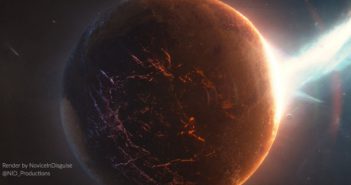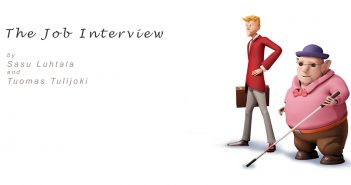Photogrammetry (the process of reconstructing 3D models from images) is awesome, but often generates heavy and 'noisy' meshes. You'll need to manually clean up the results afterwards to make them usable.
Hello dear Blenderheads,
I've made a video showing part of the cleaning process of an architectural photogrammetry model, it's one of the rooms of "Cappella dei Notai", Palazzo della Ragione in the center of Verona, Italy; the paintings are by Louis Dorigny (1654 - 1742).
The environment has been acquired during a 5 hours photogrammetry session, Aegis Scan created a 1.8M tris model, that was reduced to 500k in Meshlab.
After the cleaning the model has been imported in Unreal Engine 4 for VR realtime rendering and interaction.
I hope you enjoy the video, happy blending!




6 Comments
correct name for the photogrammetry software is Agisoft Photoscan
Really insightful. Thank you.
Flattening and removing orphaned pieces is quite straightforward. Please can you show how to recreate broken parts?
I'm completely stuck with repairing my 3D scans at recreating pieces of scan with blender. The parts which require recreating are quite simple by themselves but i can't understand how to create and adjust them at exactly the same place fitting the original mesh so i can reapply texture with photogrammetry software and how to attach them to the rest of scanned mesh replacing broken parts to became single solid piece. Please can you help?
Hello Gryphon,
there's no simple way to accomplish that, what's expecially hard is using the texture from the photogrammetry model, that may or may not contain the colors for the part you need to reconstruct.
What i've done in the past has been remodeling the missign parts anew, than stitch it to the holes in the photogrammetry mesh and finally find parts of the texture that may fit the new geometry and map my UVs there.
Yeah it is true regarding texture for invisible parts. But i face situation when part is visible but photos quality and amount is not enough to reconstruct this particular area or reconstruction quality is awful. If i remodel this part of mesh i can import mesh back to Photoscan and reproject real textures from photos on to mesh including repaired parts. Furthermore in many cases missing or low quality parts are ironically simple like flat or semi-flat surfaces or shapes which can be just extruded or copied from nearby areas. The only condition is to keep mesh position so it will be imported back in to right place to project textures...
But i'm newbie in blender and i'm hitting the wall at each step while trying to reconstruct mesh. Even while trying to stitch simple flat plane or cube back to mesh. Please can you teach me how to do this?
Also there is some places where i need a cross sections of mesh to visually draw the corrected edges at each side of gap in mesh and than somehow make blender connect them in to solid surface than stitch this to mesh.
The forums tell just use clipping to temporarily hide parts of mesh but this does not work in ortho view mode and perspective view is useless as reference to fit to while reconstructing cross section.
How to specify reference plane on which reconstructed cross section line will be drawn/edited while viewing from different angles?
How to adjust textures to remove shades the way the new lights can be placed around the object?
etc...
if it's hard for you to stitch new geometry and find the correct depth, i would suggest starting from the existin mesh: you can extrude a group of faces then model from there.